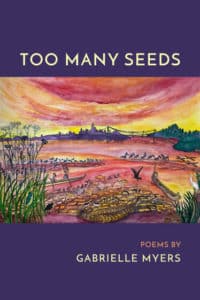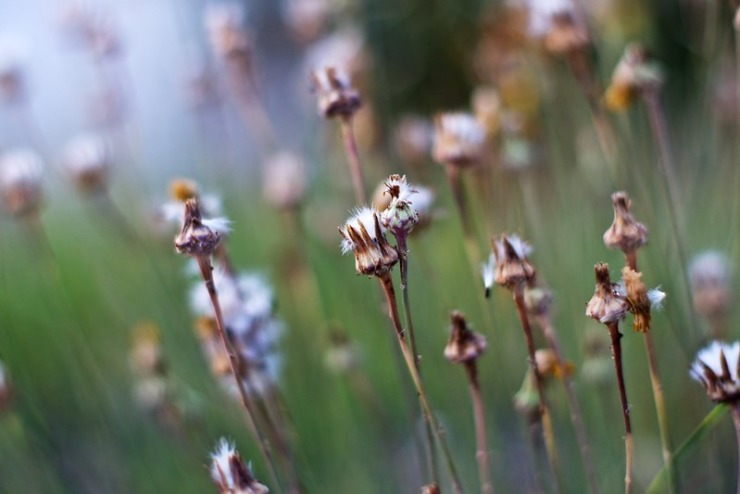Poet Gabrielle Myers on food, nature, and life …
It’s no surprise to find food, nature, and food in nature in the poetry of Gabrielle Myers. She’s an English teacher now, but she worked for years at as a chef. Food is important. The quality of food is important. Her poems are filled, like seeds, with food metaphors. Her recently published first collection, Too Many Seeds, is a veritable feast of images, ideas, questions, and answers about food, nature, and what we do in the short time we have on this planet.
The 45 poems in the collection take us to picking heirloom tomatoes, searching for fennel pollen, picking figs, examining quality control and the processing line at a dried fruit factory, asking questions about an injured bee, noticing what you see from your window at lunchtime, and watching a hummingbird in an orange tree. She expertly uses the language of food and nature, and food from nature, to weave a consideration of life and what it means.
Her words are simple, pointed, and often stark. She favors nouns and verbs, pushing adjectives and adverbs aside is favor of direct statements, allowing the words and the images they evoke to provide necessary color and depth.
You might also find yourself getting hungry as you read the poems.
Myers looks for food, and life, in her garden, in open fields, and even growing wild along highways. And she finds it.
Lidded

Tell us how you put yourself
In there. Claim speech and hook the lip.
Maintain your place by saying
What sound you are.
Along the highway wild fennel, ground-tender,
Stiffens in passing car wind.
Motion beats it against the guardrail.
It gets tougher and bends less.
Summer stalks rail hard,
Their fronds lift up
Like a frustrated mother’s forked palm.
In the fields we picked fragrant tomatoes:
Black Cherokee, Green Zebra, Sungold
— our hands itchy black resin.
Fava and pea vine greenness
Merged into tenacious eggplant veins,
Lengthened into pock marked tomatillos
(little fruit bells sheathed from sun)
Began to grow, overtake.
Rake yourself in like wind
Cull dead leaves from open fields.

Gabrielle Myers
An original, individual voice abounds in these poems. And you discover loveliness in a short poem like “Grain,” which Myers begins by writing that “The river is grain to millers’ hands / The swaths and ports distended / Swallows make grasses figurative / Every river is a wheat tip now …”
Myers is a writer, poet, teacher, editor, and chef who lives in California’s Sacramento Valley. She previously published a memoir, Hive-Mind, which describes her awakening and transformation on an organic farm. Her poems have been published in The Adirondack Review, San Francisco Public Press, Fourteen Hills, Evergreen Review, pacific-REVIEW, Connecticut River Review, Catamaran, and other literary journals. She worked as a cook and chef at several San Francisco-area restaurants and catering companies. She is currently a tenured professor of English at San Joaquin Delta College.
Too Many Seeds is indeed about food and nature, but it uses food and nature to consider life, to reflect upon the meaning of life, and to question what we often take for granted about both food and life.
Photo by Nan B. Agyei, Creative Commons, via Flickr. Post by Glynn Young.
How to Read a Poem uses images like the mouse, the hive, the switch (from the Billy Collins poem)—to guide readers into new ways of understanding poems. Anthology included.
“I require all our incoming poetry students—in the MFA I direct—to buy and read this book.”
—Jeanetta Calhoun Mish
- “On Frost and Eliot” by William Pritchard - October 30, 2025
- Poets and Poems: Patricia Clark and “Self-Portrait with a Million Dollars” - October 28, 2025
- Poets and Poems: Paul Willis and “Orvieto” - October 23, 2025


Leave a Reply